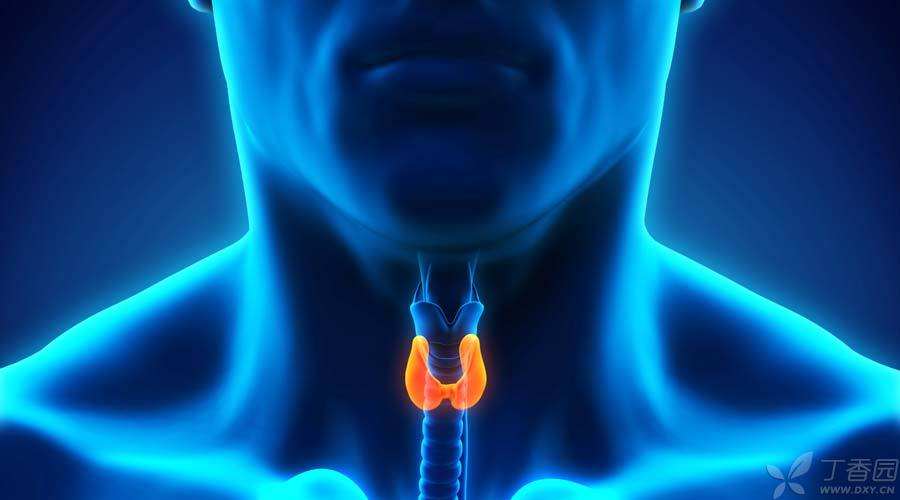
As the saying goes, [Three Axes for Hyperthyroidism Treatment: Drugs/Surgery/Isotopes].
These three axes are the classic treatment methods that have been tested by history and unanimously recognized. They are more than enough to deal with the vast majority of hyperthyroidism. According to the individual characteristics of different hyperthyroidism patients, clinicians will choose the most suitable one.
Methimazole, propylthiouracil and other [antithyroid drugs] and surgical treatment are usually familiar to patients and easy to understand. Today, I will mainly introduce [isotope iodine] (I-131) therapy.
What is [isotope iodine]?
To understand isotope iodine, we can start with its two properties:
- Iodine: I-131 is an isotope of iodine. After entering the body, like common iodine, it will be ingested by the body and enriched in the thyroid gland, which is used to synthesize thyroid hormones. Isotope: Because it is an isotope, I-131 will produce ionizing radiation, mainly rays, and very small amounts of rays during decay.
Because I-131 is enriched in thyroid gland and the range of radiation is extremely short, only 0.8 mm, its radiation energy is almost completely absorbed by thyroid tissue, resulting in degeneration and necrosis of thyroid cells.
At the same time, it has little effect on tissues around thyroid gland and other organs.
In this sense, isotope iodine therapy is a kind of [thyroidectomy without operation].
What are the advantages of isotope therapy?
Isotope iodine is a treatment method for hyperthyroidism that has been published for more than 70 years. Its effectiveness and safety have been fully confirmed.
- Antithyroid drug therapy has long course of treatment, high side effects and recurrence rate, short isotope iodine therapy time and high cure rate. The risk of complications related to surgical treatment is high, and isotope iodine treatment is safe. Isotope iodine therapy is regarded as the first choice for adult hyperthyroidism. Children (over 5 years old) and adolescents with hyperthyroidism can also choose isotope therapy if drug or surgical treatment fails or recurs.
Who is suitable for isotope therapy?
Iodine isotopes are especially suitable if hyperthyroidism patients have the following characteristics:
-
Allergy to [antithyroid drugs] or other adverse drug reactions;
-
In the past, [antithyroid drugs] had poor curative effect or had recurred many times.
-
There are contraindications for surgery, or the risk of surgery is high, which is not suitable for surgical treatment;
-
History of neck surgery or external irradiation;
-
The course of hyperthyroidism is long.
-
Elderly patients, especially those at risk of cardiovascular diseases;
-
Complicated with liver function injury;
-
Combined with leukocytopenia or thrombocytopenia;
-
Complicated with heart disease.
Is there no shortcoming in isotope therapy?
Of course, isotope iodine therapy also has its shortcomings.
The biggest disadvantage that many people cannot accept is that a considerable number of hyperthyroidism patients will change into [lifelong hypothyroidism] after treatment and need long-term thyroxine supplement.
To turn one disease into another, one has to take medicine for life. Is this what treatment? I believe many people will have such doubts.
In fact, the treatment of hyperthyroidism is complicated and has great damage to the body. Hypothyroidism is easy to diagnose and simple to treat. As long as a proper amount of thyroxine is added to hypothyroidism patients, it is almost the same as healthy people. Therefore, the two rights are lighter than the one, and hypothyroidism is easy to hyperthyroidism, which is worth it.
Of course, the general consensus of medicine cannot replace the judgment of individual value, and the specific choice must be decided by the patients themselves.
Note that isotope iodine therapy is not suitable if the patient meets the following characteristics:
- Patients with hyperthyroidism complicated with thyroid cancer during pregnancy, lactation, or within the next 6 months, hyperthyroidism patients complicated with moderate to severe active ocular lesions

Precautions for Isotope Therapy
If you are a hyperthyroidism patient and plan or have chosen isotope iodine therapy, it is recommended to read the following carefully.
- Pretreatment
-
The low iodine diet for 1-2 weeks before treatment keeps the thyroid gland in a [iodine starvation] state, which can promote the therapeutic I-131 to be ingested by thyroid tissue more efficiently.
-
It is recommended that all patients use [adrenergic receptor blocker] drugs before treatment, such as propranolol, atenolol, metoprolol, etc., unless patients have contraindications to use such drugs.
-
If the patient’s hyperthyroidism is serious, for example, the symptoms are very obvious, or the level of thyroxine (FT4) exceeds the normal upper limit by 2-3 times, antithyroid drugs (methimazole is preferred) should be used in advance for a period of time, and the drugs should be stopped 3 days before isotope treatment.
-
If the patient is complicated with serious basic diseases, such as heart disease, infection, liver failure, kidney failure, uncontrolled diabetes, cerebrovascular disease, lung disease, etc., corresponding treatment must be given first, and isotope treatment must be carried out after the condition is stable.
- Day of treatment
-
Fasting is required for 2 hours before and after oral administration of I-131, and moderate drinking water is allowed.
-
Don’t rub the thyroid gland after taking the medicine.
-
On the day after taking the medicine, patients with a history of [carsickness] should avoid taking motor vehicles to prevent carsickness and vomiting.
Precautions after isotope therapy
Step 1 Rest
Pay attention to rest, avoid tiredness and mental stimulation, drink more water and urinate more within 2 days after taking medicine.
2. Response to post-treatment discomfort
- Isotope therapy generally has no discomfort. A few patients may suffer from fatigue, anorexia, nausea, skin pruritus, thyroid swelling and other symptoms within a few days after treatment, as long as attention is paid to observation and symptomatic treatment is required. If individual patients have thyroid pain symptoms, they can be given necessary analgesic treatment.
STEP 3 Pay Attention to Radiation Protection
During a period of time after oral administration of I-131, the patient will cause a small amount of radiation to the nearby close population. Although the amount of radiation released in vitro is limited and will not cause definite radiation hazards. However, according to the principle of radiation protection, it is recommended to keep a distance from the population in the following ways:
- Within 1 week after treatment, keep a distance of more than 1.8 meters from others in a fixed residence; Avoid sharing tableware with others within 1 week after treatment; Close contact with infants and pregnant women should be avoided within 2 weeks after treatment. Those with family planning should consider conception six months later.
4. Response to aggravating symptoms
Within 2 weeks after isotope treatment, thyroid hormones [stored] in thyroid tissue will still be released into blood, which may aggravate hyperthyroidism symptoms.
The following measures may be considered:
- Continue to take [adrenergic receptor blocker] until symptoms disappear; For patients with severe hyperthyroidism, methimazole can be taken orally after isotope treatment for 3-7 days. For patients with severe hyperthyroidism, within 4 ~ 6 weeks after oral administration of methimazole, the dosage will be gradually reduced and the drug will be stopped as the thyroid function is normal.
5. Persistent review
Most patients will gradually relieve and disappear within 4 ~ 8 weeks after receiving isotope iodine treatment, and the thyroid volume will shrink and return to normal.
It is suggested that follow-up should be carried out within 1 ~ 3 months and 6 months after treatment respectively to evaluate the curative effect, and the interval between follow-up can be gradually extended to 1 follow-up every year.
6. May require retreatment
After 3-6 months of treatment, if hyperthyroidism is still not relieved, isotope therapy can be performed again according to the needs of the disease.
7. Response to [hypothyroidism]
If [hypothyroidism] (i.e. Hypothyroidism) occurs after treatment, [levothyroxine sodium] drugs can be applied for treatment, and regular review and dose adjustment can be carried out.
Conclusion
In short, hyperthyroidism is very common, and every hyperthyroidism patient must choose between drugs, surgery and isotopes under the guidance of doctors.
Learning and understanding the relevant knowledge of diseases and their treatment can help us make correct and rational decisions and make the treatment achieve the best effect.
Responsible Editor: Ding Ruoshui
This article is exclusively authorized to be used by Clove Garden and refuses any other form of reprinting.
Photo Source: Station Cool Hailuo Creative
